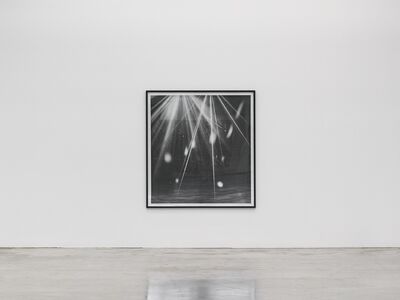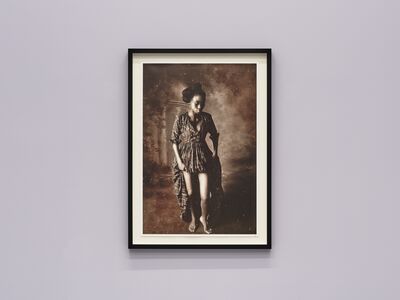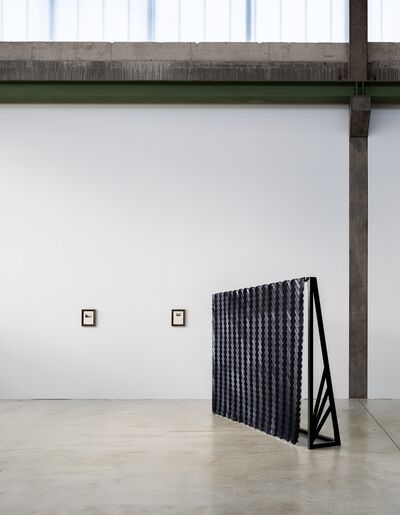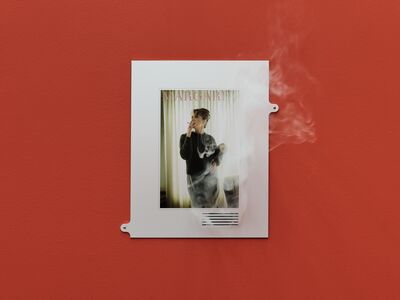In Abwesenheit
Collection Presentation – Photography
03.03.2024 - 08.09.2024
Opening: 3 March 2024, 2–6 pm
Tamibé Bourdanné, Olafur Eliasson, Jan Paul Evers, Jef Geys, Dominique Gonzalez-Foerster, Thomas Grünfeld, Germaine Kruip, Taiyo Onorato & Nico Krebs, Martin Parr, Émilie Pitoiset, Man Ray, Ugo Rondinone, Thomas Ruff, Thomas Struth, Stephen Shore, Martina Sauter, Tamary Kudita, et al.
‘A photograph is both a pseudo-presence and a token of absence. Like a wood fire in a room, photographs – especially those of people, of distant landscapes and faraway cities, of the vanished past – are incitements to reverie.’
Susan Sontag, On Photography, 1977
The Philara Collection is pleased to present In Abwesenheit, a curated exhibition of photography. The works shown span a period of almost a century, starting from the beginnings of surrealist photography in the 1920s, moving forward by way of the black and white photographs of the 1960s and 1970s through to contemporary iterations of digital and analogue photography. The works shown are united in their intensive engagement with questions of absence, voids and lack. They pose a diverse range of questions, interrogating the physical qualities of photography and its technical requirements, as well as broader aspects such as speculative fiction, belonging, nostalgia and ambiguity.
Some of the works shown concentrate on the absence of a camera – cameraless photography. In his phg series, Thomas Ruff uses digital renderings to compose images modelled on photograms. Germaine Kruip’s installation of a mirror and the light it reflects uses simple geometric forms and the interplay of light and shadow to evoke intimate moments of collective viewing, with no use of the medium of photography whatsoever. Despite this, Untitled Circle, with its elliptical mirror surface, calls to mind associations with the origins of photographic apparatus, such as surfaces polished to a mirror finish for daguerreotypes, or the mirror reflection of the camera obscura.
Other works were created specifically with an intentional lack of context in relation to the identity and temporal location of the people they depict. Although photographs perpetuate a fragmentary detail of a moment in time, an event or a person, they are nevertheless detached from their reality and the context of their creation.
In her multi-part installation Giselle, named after the protagonist of the ballet of the same name, a woman who becomes a dancing ghost after her suicide, Émilie Pitoiset, for instance, transforms found photos of unknown people, taken in the period between the 1920s and 1950s, into further images referencing the tragic central character of the piece.
In her collage Florence & Constantin (Jardin Brancusi), Dominique Gonzalez-Foerster recreates a photograph of the photographer Florence Meyer Homolka[1], taken by Constantin Brancusi at his studio in 1932, placing herself in the position of Homolka.
Others take a different approach, concentrating on manipulation of images, making playful use of their capacity for modification. The continual development of technical and digital tools for image processing erodes the concept of the integrity of the image and subverts photography itself. This opens up more space on the periphery for fantastic speculation, which could, for instance, be taken by imaginative exploration around issues of gender. Ugo Rondinone's exhibition I don't live here anymore, from which the edition of the same name originates, describes the search for a deeper understanding of one's own self-identity. Rondinone portrays himself in his self-representation as a timeless, androgynous cyborg, whose prosthetic hand almost nostalgically indicates times gone by rather than an uncertain future.
In her series Sight Unseen, Tamary Kudita examines the extent to which selective historical narratives shape the reality of Black people's lives today. She uses strategies of appropriation and recontextualisation, as well as subversion and overlaying of historically white-dominated and contemporary aesthetics, to make the complexity of identity visible and to undermine simplistic, colonially influenced interpretations of Black culture. Her models wear dresses in apparently Victorian styles made from African fabrics. This gesture is not only symbolic of the diversity of identities, but also subverts the social status of clothing as a marker of belonging.
Exhibition curators: Julika Bosch, Hannah Niemeier
Curatorial assistant: Dana M. A. Bulic
[1] Also known as Florence Meyer, Florence Homolka a.o.

Jan Paul Evers

Germaine Kruip
Photo: Kai Werner Schmidt

Tamary Kudita

Émilie Pitoiset
Photo: Kai Werner Schmidt
